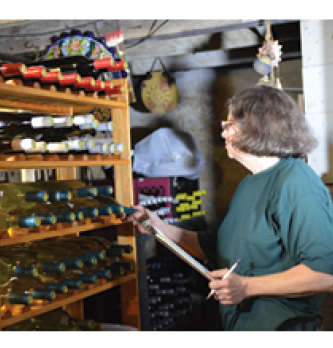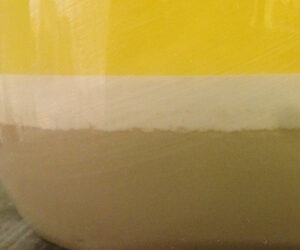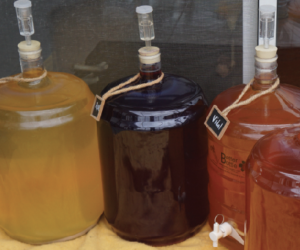 If you’re like me, you made your first wine as a toe in the water. If it resonated, you made another, and another, eventually accumulating a selection.
If you’re like me, you made your first wine as a toe in the water. If it resonated, you made another, and another, eventually accumulating a selection.
For my wife and winemaking partner, Denny, and I, it is a matter of what we like, what food we prepare (or order in), and also our “liquid 401(k).” That’s how I regard our longer-term efforts —the Barolos, Amarones, and such that like their quiet time. Stocking a wine cellar is fun, and we devised a plan on how to effectively keep our cellar ready for whatever comes our way.
Some caveats:
1: A plan that doesn’t allow for adjustment on the fly is a flawed plan. You will likely encounter new experiences.
2: We don’t make wine solely on someone’s recommendation, or the description. We became familiar with every-
thing we made before buying the juice. This has introduced a surprise: We find, as winemakers, we are spending more than ever on commercial wines! We try new things; drink what is not available in kits or pails, jump on specials, and buy commercial wines to keep us away from our young reds and to top off carboys until we can use our own.
As a couple who came to this hobby preferring dry whites, we began with Sauvignon Blanc. As soon as we knew we were successful, we already knew we enjoyed the process, so it was time to ferment anew. For our second kit, we chose Barolo, because we enjoy it, and because we had the thought that finding a balance between near-term and longer-term varieties would be a reasonable approach.
Having a single fermenter and single carboy, our intent was to “always be fermenting,” beginning a new kit based on backdating from the availability of the carboy. We also planned to alternate reds and whites — a one for now, one for the bank process. We followed the Barolo with Gewürztraminer, our first juice pail, and that’s when things became cloudy (but not our wine!).
We followed with Riesling. A week after that, we “adopted” an orphaned pail of Verdicchio, making three whites in a row. Back in sync, and having ramped up to three fermenters and three carboys, our next kit was Tempranillo, followed by Valpolicella, and before long we realized we had made six consecutive reds!
That brought us up to Chilean season, and we ordered Cabernet Franc, Riesling, and Sauvignon Blanc.
In a time frame from mid-August, 2014, until late April, 2015, we produced 20 kits and pails. That’s 600 or so bottles. We enjoyed discovering wines new to us, and enjoyed old favorites, produced by our hand.
After a year at this, we are beginning to feel that our cellar is comprehensive for our needs and dining habits. Now we face a philosophy-shift: Maintaining the cellar we created.
While we may still choose to be “always fermenting,” we have moved to an “always aging” cycle. While the availability of kits means we can make something anytime, we can also shift to fermenting certain varieties seasonally, twice per year as fresh juice becomes available, (Italian/Californian and Chilean). It is a sort of winery model, repeating certain seasonal production each year and banking it.
My best advice: Make favorites, something for earlier rather than later, select according to your dining preferences, and look for balance between short- and long-term aging. And buy commercial wine to keep you away from that young stuff!







